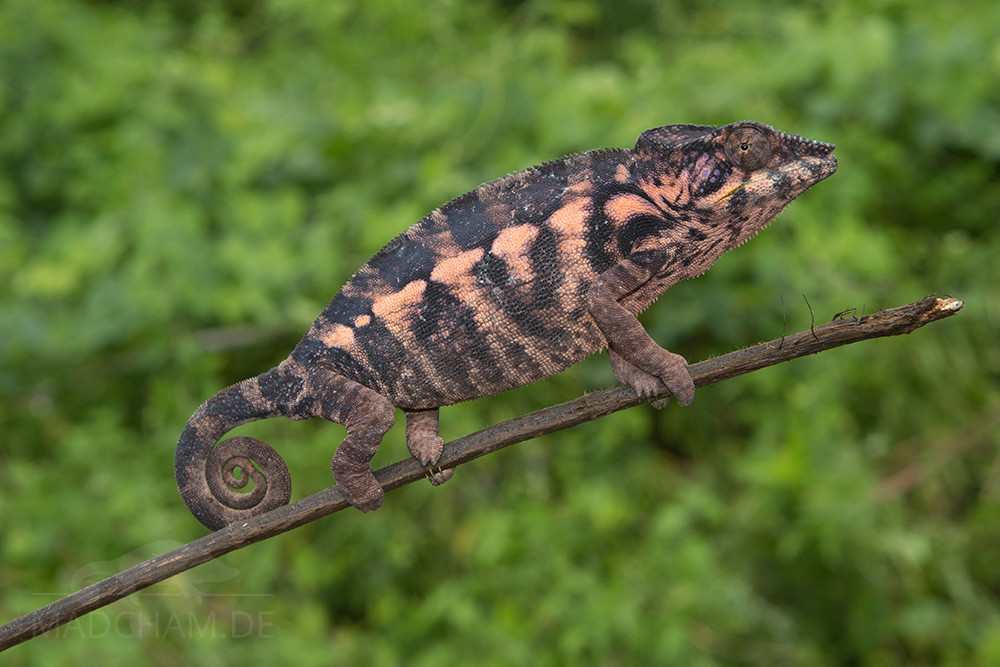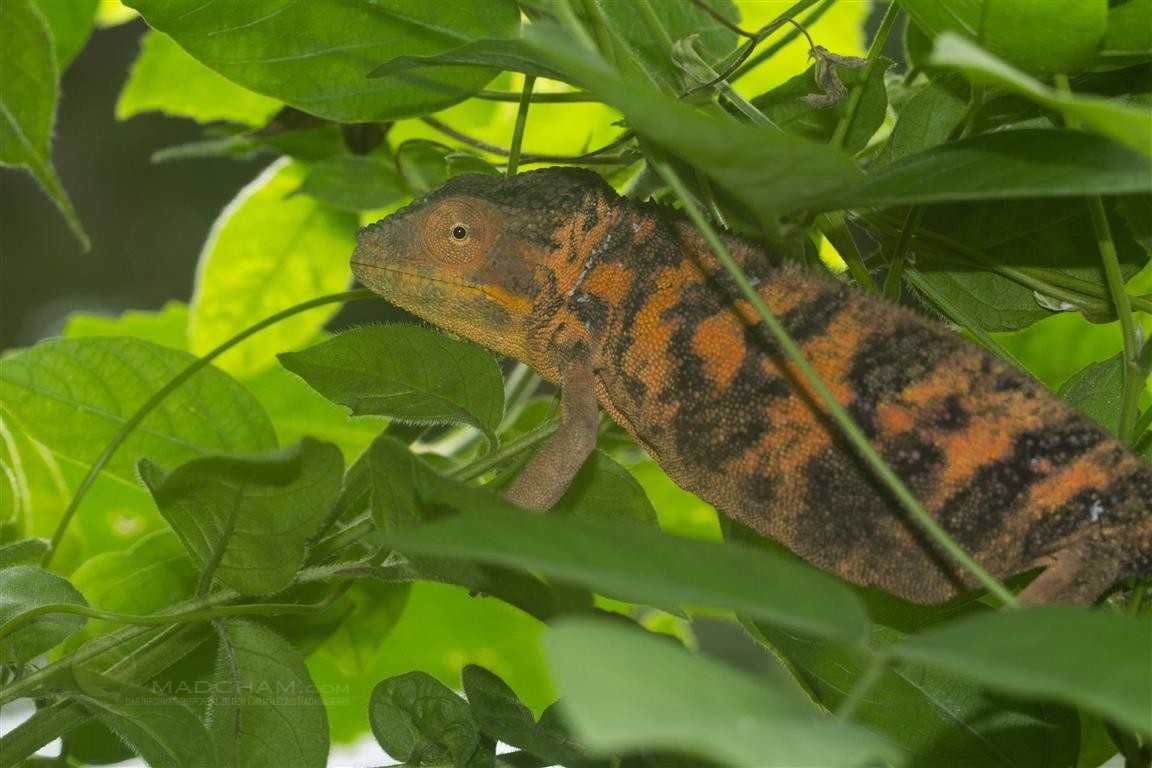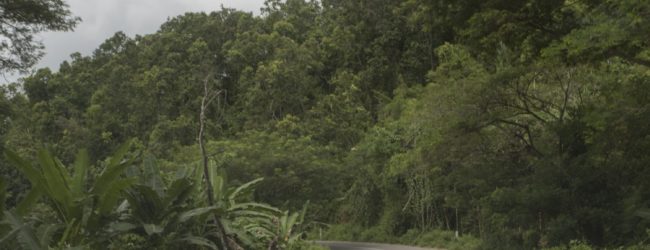Distribution of the local form:
Djangoa is a scattered hut village in region Diana in northwest Madagascar. It is located south of Ambanja at RN6, and is surrounded by banana plantations, coffee, and cocoa fields as well as hilly secondary vegetation. There is nothing left here from the original rainforest, instead conspicuously much bamboo has spread. You can find panther chameleons of this local form beginning at the village Akingameloka, which eponymic river builds a natural barrier to the south. Along the street, there are also the villages Beramboand Ampasibe before the actual village Djangoa is reached. To the north, this local form is limited by another river called Ambavanidjangoa (which means “in the north of Djangoa”) behind the village Mahilaka. It separates Djangoa local form from the next local form, Ambanja.
Appearance of the local form:
The males of this local form are turquoise green to blueish with bright red stripes, they look similar to some specimen from Ambanja.
Weight table

Gewicht = weight in grams, Kopf-Rumpf-Länge = snout-vent-length in cm, Weibchen = females, Männchen = males
Since 2015, we have been measuring the weights of chameleons found by us in Madagascar, as far as the animals (and our scales) participate. In the long term, we aim to obtain an average weight in relation to snout-vent-length (measured from the tip of the nose to the cloaca) for each species from as many measurements as possible. It is important to know that all weights were measured towards the end of the rainy season (= best food supply), so these should be maximum weights on Madagascar. Triangular symbols in females mean not pregnant, round symbols mean pregnant. In Furcifer pardalis, contrary to our original assumption, it has so far turned out that there are no serious differences in the ratio of SVL to weight between the individual local forms.
| Jan | Feb | Mär | Apr | Mai | Jun | Jul | Aug | Sep | Okt | Nov | Dez | |
| Durchschnittl. Temperatur | 26 | 26 | 26 | 26 | 25 | 24 | 23 | 23 | 24 | 25 | 26 | 26 |
| Minimale Temperatur | 22 | 22 | 22 | 22 | 20 | 18 | 18 | 18 | 19 | 20 | 21 | 22 |
| Maximale Temperatur | 30 | 30 | 31 | 31 | 30 | 29 | 29 | 29 | 30 | 31 | 31 | 30 |
| Regentage | 29 | 26 | 24 | 15 | 8 | 7 | 7 | 8 | 7 | 10 | 18 | 25 |
Die angegebenen Daten wurden von uns innerhalb mehrerer Jahre mit Thermo- und Hygrometern direkt an den Fundorten der Tiere gemessen und zusammengetragen. "Durchschnittliche Temperatur" bedeutet, dass die Werte eines gesamten Monats zu einem Durchschnittswert berechnet wurden, z.B. wurden alle gemessenen Minimalwerte eines Monats zu einem durchschnittlichen Minimalwert für Februar berechnet. Das bedeutet im Klartext, dass einzelne Spitzenwerte eines Tages deutlich höher oder niedriger als die durchschnittlichen Minimal- und Maximalwerte liegen können. Es ist also möglich, dass zwar das durchschnittliche Maximum bei 29 Grad liegt, es aber an einigen Tagen des Monats 33°C oder gar 35°C warm war.
In Ambanja ist es ganzjährig warm mit Temperaturen um die 25°C. In der Sonne kann die Temperatur gut über die 30°C gehen. Nachts sinken die Temperaturen auf bis zu 20° C herunter, während der Trockenzeit von April bis September kann es auch mal knapp darunterr auf 18°C gehen.
Während der Regenzeit regnet es täglich lange und ergiebig, so dass die Luftfeuchtigkeit enorm ansteigt. Während der Trockenzeit bleibt es jedoch auch sehr grün in der Gegend. Es regnet zwar deutlich weniger, aber die immer mal wieder auftretenden Niederschläge und die Lage direkt zwischen Flüssen sorgen für eine stetige Wasserversorgung der Region.

Die UVB-Daten wurden mit einem Solarmeter 6.5 im Frühjahr (Anfang April) zur höchsten Aktivitätszeit der Chamäleons gemessen. Gemessen wurden jeweils maximal für das Chamäleon zu erreichende Werte im Habitat.
Habitat:
In the rainy season, you can find panther chameleons all along the streets or in open terrain. The bushes and mango trees around the small wooden hut villages offer enough habitat and even nearby some bamboo groves you can find panther chameleons.

































